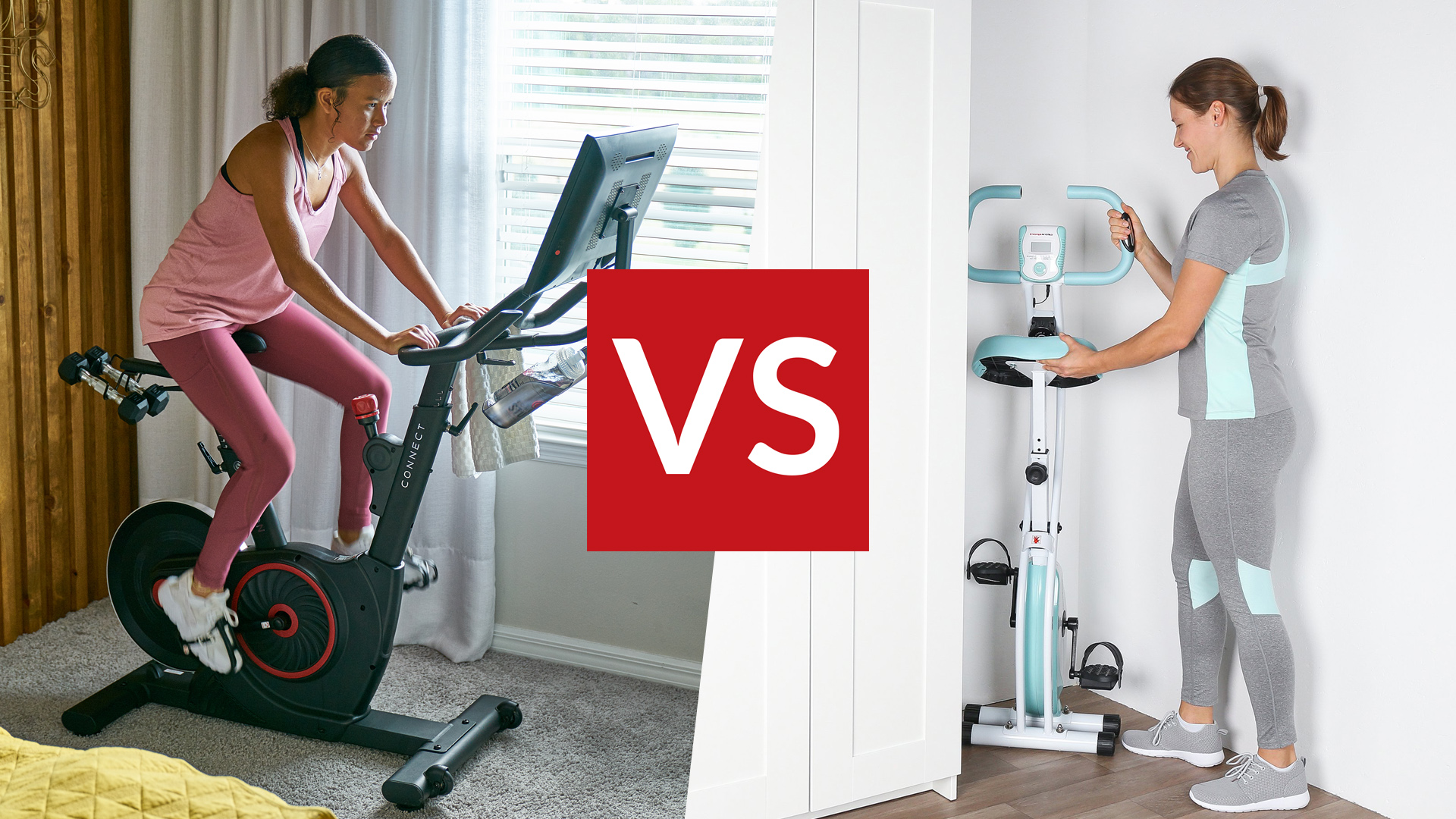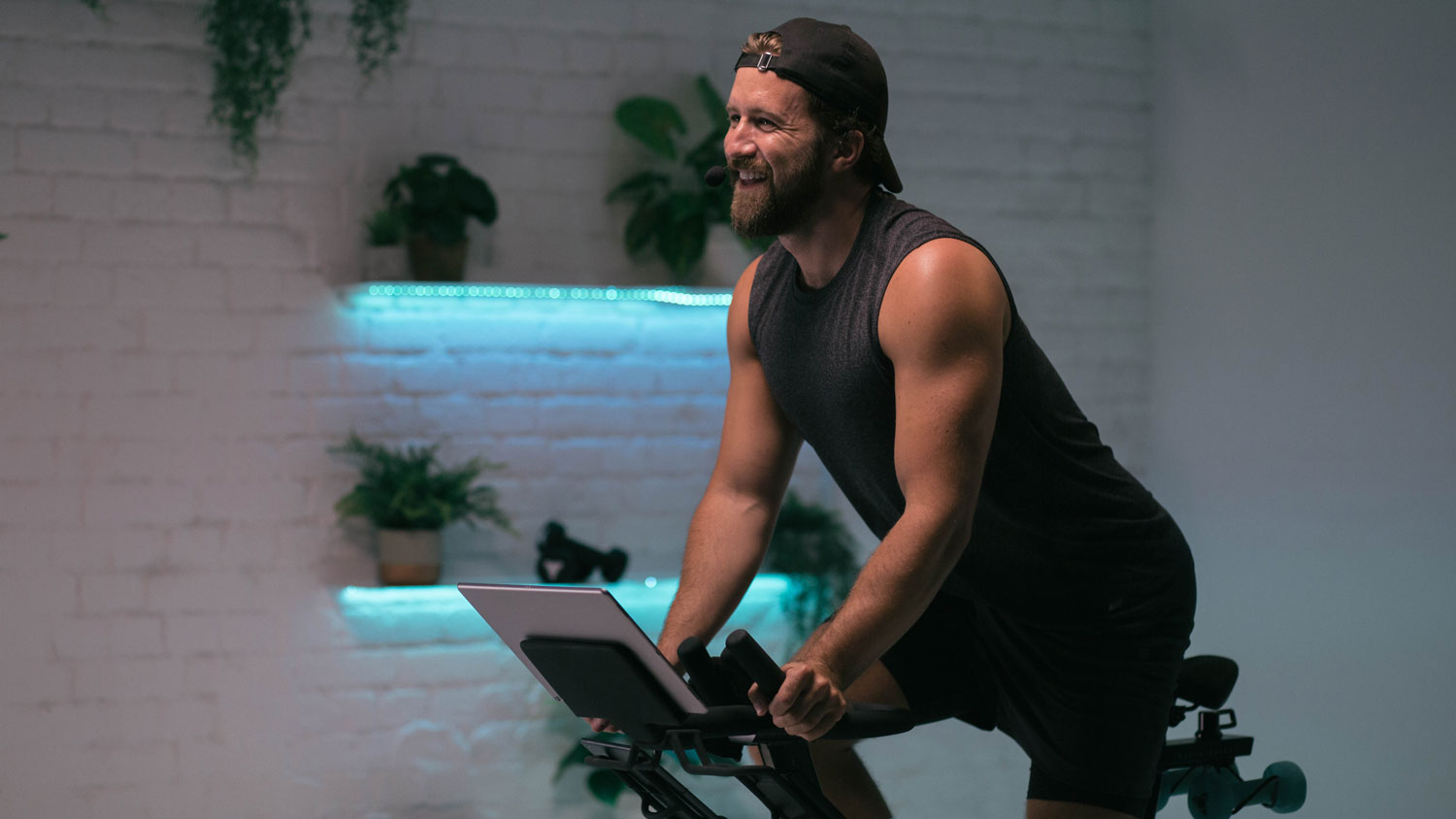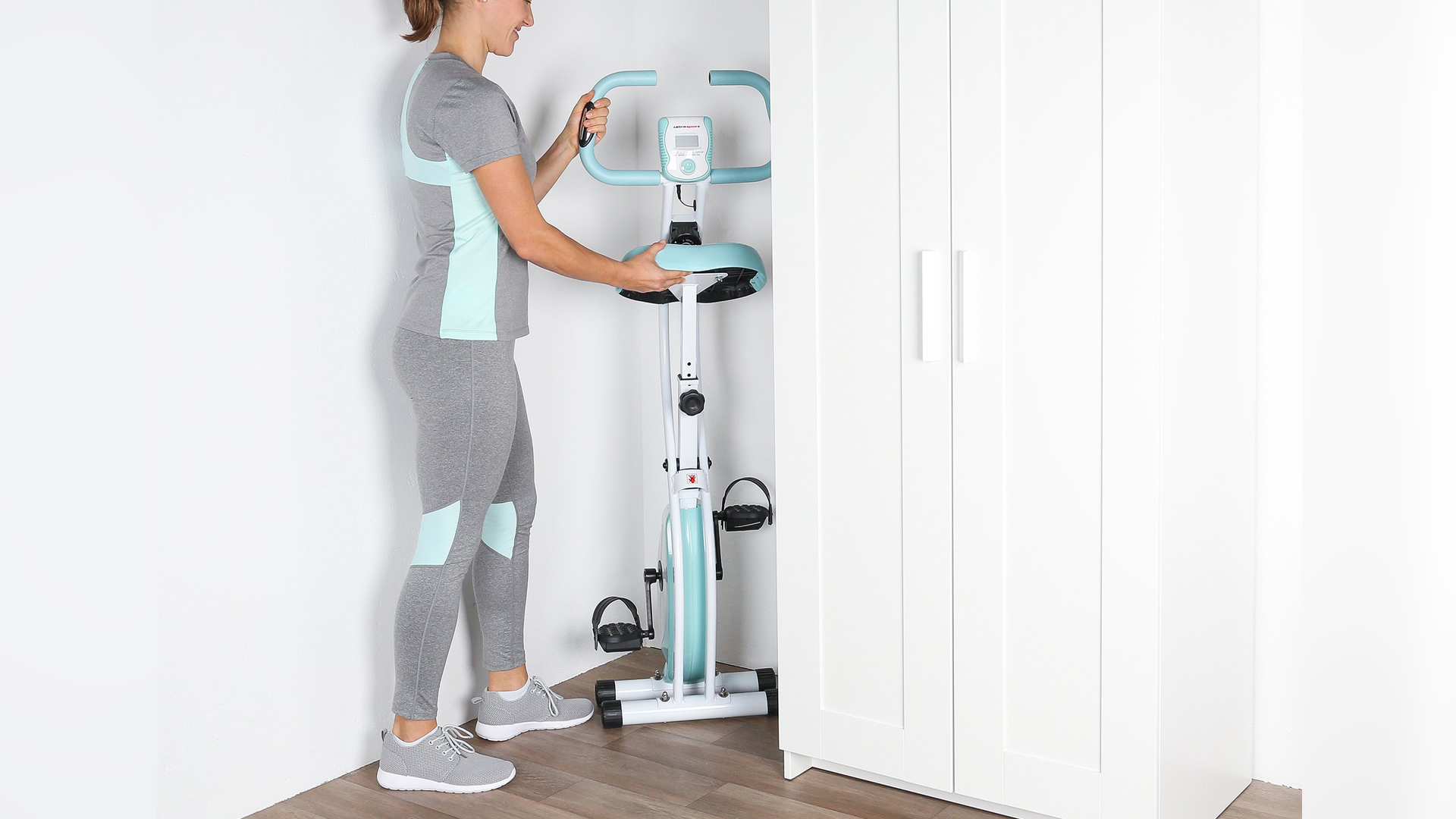Folding vs non-folding exercise bikes: Which indoor bike should you get?
To fold, or not to fold: that is the question…


Less than a decade ago, buying the best exercise bike for the home was a simple affair. Did it have pedals? Check. And a couple of levels of resistance? You betcha. Did it have a seat with a bit of padding, and could it take your weight without collapsing? Hopefully…
Then came the US launch of fitness juggernaut Peloton back in 2012 (the UK had to wait patiently until 2018 for it to cross the pond), and the at-home cycling scene was completely revolutionised. Suddenly, the decision-making process surrounding the buying of an exercise bike became a lot more complicated.
These days, there’s a multitude of stationary exercise bikes on the market, each boasting a plethora of features that will make your head spin as well as your feet. But before you get bogged down in the finer details of whether your bike should have an LCD screen, built-in heart rate monitor, surround sound and virtual fitness platform, might we suggest you first go back to absolute basics and decide whether your bike should fold or not?
Because while it might sound silly now, choosing one of the best folding exercise bikes over a non-folding bike could just mean the difference between having a bike you use regularly (which means you’ll have a better chance of sticking to your new fitness regime), or never using it at all.
Because you know it’s all about the space
Indoor cycling has never been more popular, and that’s because it’s a fantastic all-round cardiovascular workout that’s low on impact, big on results and suitable for people of all fitness levels, ages and budgets. However, as with most pieces of home cardio equipment, exercise bikes aren’t exactly small.
So, if you’re short on space and you don’t have the luxury of a spare room in your house or apartment to accommodate a big, solid piece of machinery, you’ll need to think carefully about your bike’s design, portability and dimensions before making a purchase (the same thinking should also be applied to treadmills and, thankfully, there are many ingenious folding treadmills to choose from).

Indeed, the need to create space-saving fitness equipment has never been more at the forefront of manufacturers minds (VAHA Mirror, anyone?).
Get all the latest news, reviews, deals and buying guides on gorgeous tech, home and active products from the T3 experts
Now that brands have nailed other key areas of consideration such as comfort levels, ease of use and the effectiveness of interactive workout platforms, they’re increasingly focused on making cleverly compact exercise bikes that can be folded away into a cupboard or shoved under the bed at a moment’s notice and whipped out in a jiffy when you’re ready to work up a sweat. Just look at the Ultrasport F-bike: so foldable!
But what if size isn’t everything in your household? If you’re still not sure whether to choose a solid non-folding bike or a space-saving folding model, keep reading for our breakdown on the pros and cons of both.
Folding exercise bikes: the pros and cons
The most obvious pro of a folding exercise bike is that it can be folded down, usually to half its fully erected size or less, so it can be easily stored without taking up too much space – perfect when you don’t have much of it to spare. This means you can leave it standing in your front room or bedroom on days when you’re happy to walk around it or hide it away from prying eyes when visitors call at short notice.
Folding exercise bikes also tend to be much lighter in comparison to non-folding bikes, and often come with built-in wheels and handles for easy transportation. That said, make sure to examine the dimensions of any potential purchase carefully, and get out your tape measure to ensure it will fit into the intended hidey-hole or space when folded down, otherwise, its entire purpose will be defeated.
Some models can fold up to tiny proportions while others still take up a fair bit of room, especially if you choose a sturdier model that allows for a rider weighing over 100kg.

And talking of weight, do check out the maximum weight that your folding bike can hold. Most modern folding bikes are strong and durable, but their collapsible structure means they do have their maximum user weight limits. If you’re looking to get out of the saddle or use your bike for vigorous, high-intensity workouts, a folding bike isn’t your best bet.
Finally, due to the very nature of their space-saving designs, you’ll generally find that folding exercise bikes are literally just that: a folding frame with pedals. They rarely come with extras like stands for phones and tablets (let alone a built-in screen) or holders for water bottles and dumbbells. But this does mean they are a much cheaper investment than their non-folding counterparts with all their bells and whistles.
So, if you’re after an exercise bike you can pull out a few times a week for a decent cardio workout while watching Netflix and put away afterwards to forget about it until the next time, a folding bike could be the right choice for you.
Non-folding exercise bikes: the pros and cons
If you’re looking for an exercise bike that’s sturdy, stable and unshakable, a non-folding model will beat folding design, hands down. That’s because the frame will be made from a single piece of metal, meaning there’ll be no joints to compromise its structure. Fewer parts also mean less chance of things breaking, and putting it together will be much simpler, too.
However, that robustness does come with a price, and we’re not just talking about the higher cost. Non-folding bikes tend to be bigger, bulkier and much heavier, so once they’re in place, they’re there for good unless you have another pair of hands available to help you move it. There’s no hiding or disguising a non-folding bike once you have it installed, although they do make excellent clothes horses and towel racks.
Not like you would want to use an Apex Bike or an Echelon Connect EX3 as a clothes horse, really.
On the plus side, this extra weight does mean they’re more suitable for anyone weighing in at the top end of the scales, and they can also handle some serious pedal power
So, if you like getting out of the saddle for hill climbs and HIIT training sessions, Peloton-style, you’ll need a non-folding bike (quite a few folding bikes categorically rule out standing on the pedals in the instructions, due to their collapsible nature).

Folding vs non-folding exercise bikes: the verdict
If you’re serious about your cycling, looking to buy a bike that will offer you lots of variety and many levels of resistance to take your fitness to new heights, or you need a model that can withstand a lot of punishment, you’ll want to invest in a non-folding bike.
However, you should only buy one if you know you have enough space to accommodate it comfortably. Why? Because once you’ve bought it, you will have to look at your bike and negotiate its bulk and many sticky-out bits day in, day out. The danger is that if it gets in the way or you stub your toe on it once too often, you’ll end up hiding it away somewhere to gather dust, never move it back again, and you won’t use it. The result? A big waste of money and no improvement in your fitness levels.
But, if you’re short on space, or you want a bike you can use a few times a week to help you clock up your recommended amount of weekly aerobic exercise - and then put away and forget about until next time– a folding exercise bike is the one for you.
Because the key to sticking to any new exercise regime is consistency. And if a folding bike makes exercise more convenient and easier for you, it’s better than buying a big bike that will become a potential annoyance over time and never get used.

Jo is a London-based freelance journalist and content creator specialising in fitness, health, lifestyle and beauty. With a degree in Journalism, Film & Broadcasting from Cardiff University and almost 20 years’ experience in the industry, she interviews celebrities and Olympians for a living, while testing out the latest beauty, hair, wellness and fitness gadgets. As a Level 3 Personal Trainer and author of several fitness guides, she gets to try the coolest workouts while reviewing active travel destinations and writing investigative features about the wonderful world of wellbeing for many of the UK’s top magazines, newspapers and digital publications. When she’s not sitting at her laptop, Jo likes exploring new walking spots with her beagle, gardening, and DIY. She is also one of the few people on the planet still obsessed with what’s coming up in Phase 5 of the Marvel Cinematic Universe.